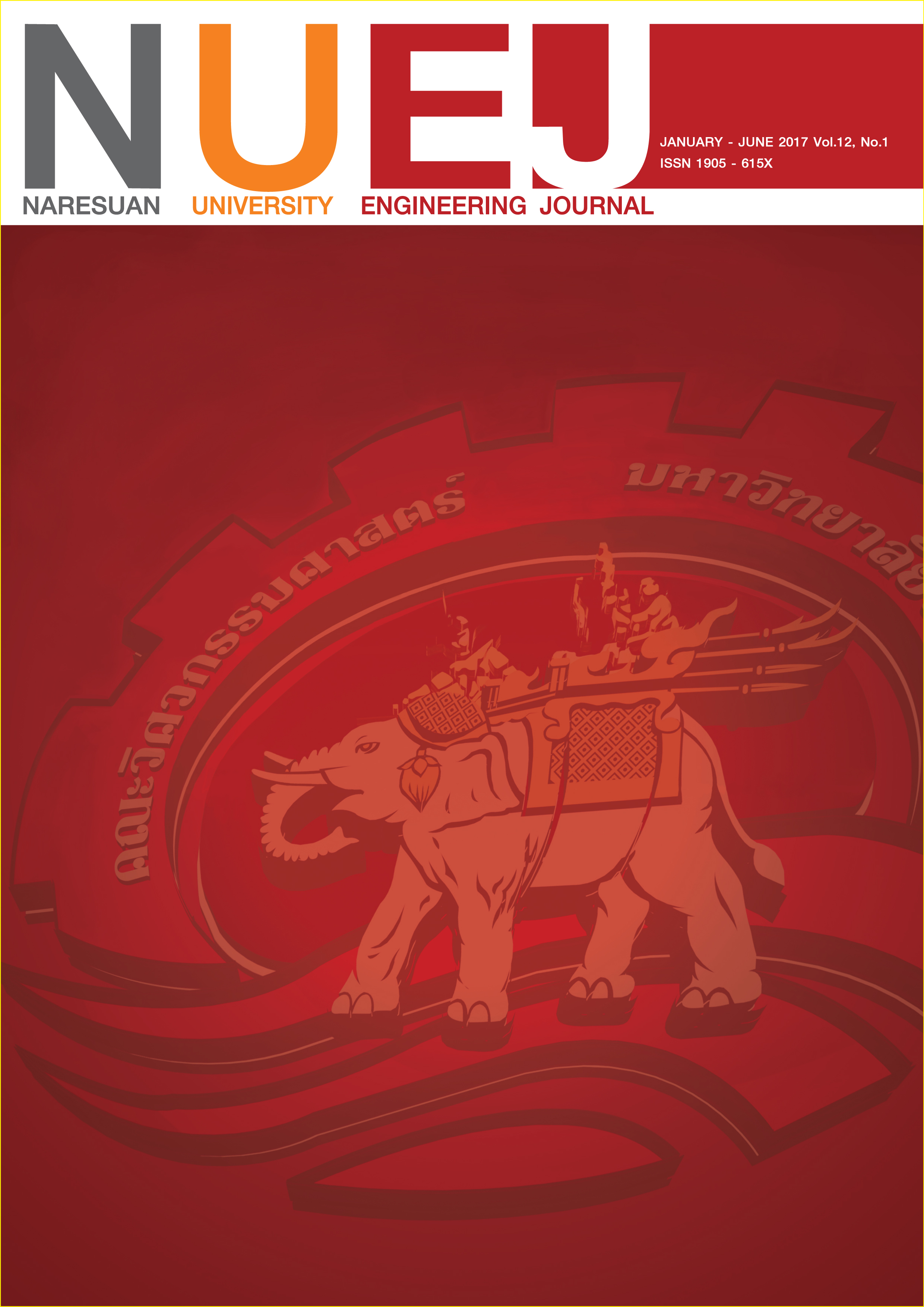Reduction of Heavy Metals Leaching from Sludge of Activated Sludge of Domestic Wastewater Treatment System
Main Article Content
Abstract
This research deal with the reduction of heavy metals leaching from sludge to utilize for cultivation by adsorbents such as bamboo charcoal, egg shell, lime, etc. The heavy metals concentration was determined by acid digestion of US. EPA method 3051 for sludge and US. EPA method 3015a for leachate. With the Synthetic Precipitation Leaching Procedure (SPLP), if revealed that at pH 2.0 all heavy metals were leached from sludge at the high level. The reduction of heavy metals leaching at pH 6.0 were conducted. It was found that bamboo charcoal and egg shell were able to reduce the leaching of Zn as 98.26% and 98.04% respectively. While lime gave the highest reducing efficiency of Cd leaching as 95.29%. In addition, the continuous leaching test by 3 simulated model unit were performed by leaching with the extract pH 6.0 rain. The 1st simulated model unit was used as the control unit, the 2nd was sludge mixed with the mixture of egg shell and lime (1,200:120:36 by wt.) and the 3rd was sludge the mixed with mixture of egg shell and bamboo charcoal (1,200:120:600 by wt.) It was found that the 2nd simulated model unit was able to decrease the leaching of heavy metal better than the 3rd the simulated model unit. in the run-off as indicated by decreasing percentage leaching of Cu, Cd, Fe, and Pb. As well as, in the permeate the decreasing percentage leaching of Cd, Zn, Fe and Cr. Therefore, the adding egg shell and bamboo charcoal was able to reduce the heavy metals leaching by acid rain from the AS sludge.
Article Details
References
Office of Natural Resources and Environmental Policy and
Planning. (2002). Report environmental quality situation.
page.
Land Development Department. 1994. Government Em-
ployee Manual of organic fertilizers to improve soil deterioration, in Improve the soil with organic matter, inorganic matter and residual waste. Division of Soil and Water Conservation, Land development Department, Bangkok.
Land development Department. (2002). Manual analysis of soil, water, fertilizer plants, soil amendments and analysis to determine Certification Bangkok: Volume 2. Publisher sciences development. 81,210.
US EPA. (1992). Stand method Toxicity Characteristic Le-
aching Procedure. (pdf file). Available Source: www.epa.
gov/osw/hazard/test methods/sw846/pdfs.pdf, December 25, 2015.
Faculty, Department of Soil Science. (2003). Preliminary
agronomist. Kasetsart University, Bangkok.
Piyaporn, W. (2003). Treatment of Heavy Metals (Nickel and Lead) and Biosorption of Basic dye (Methylene blue) by Using GIANT DUCKWEED (SPIRODELA POLYRRHIZA (L.) Schleid. Journal of Thai Interdisciplinary Research. 3 (1):
,145.
Department of Science Service. (2010). Absorbing Heavy metals with the Soviet biological. Ministry of Science and Technology, Bangkok.
Chutima, K., Arubol C., & Chakkaphan S. (2014).Effect of pH
on heavy metal leaching from waste rock in Phu Thap
Fah gold mining, 410,417. in Proceedings of Kasetsart
University at 52th. : (Science). Kasetsart University, Bangkok.
Regmi, P., J.L. Garcia-Moscoso, S. Kumar, X. Cao, J. Mao, & G. Schafran. (2012). Removal of copper and cadmium from aqueous solution using switchgrass biochar produ-
ced via hydrothermal carbonization process. Journal of Environmental Management 109: 61,69.
Wanvisa, K. (2005). Removal of Lead from Battery Manu
facturing Wastewater by Egg shell.Dissertation, Mahidol University.
Acharaporn, K. (2007). Removal of Lead from Battery
Manufacturing Wastewater by Egg shell Dissertation, Mahidol University.
Worachart,W. (2012). Remediation technologies of heavy metal contaminated soils using phosphate materials. Khon Kaen Agricultur Journal at 4th: 373, 3783.


